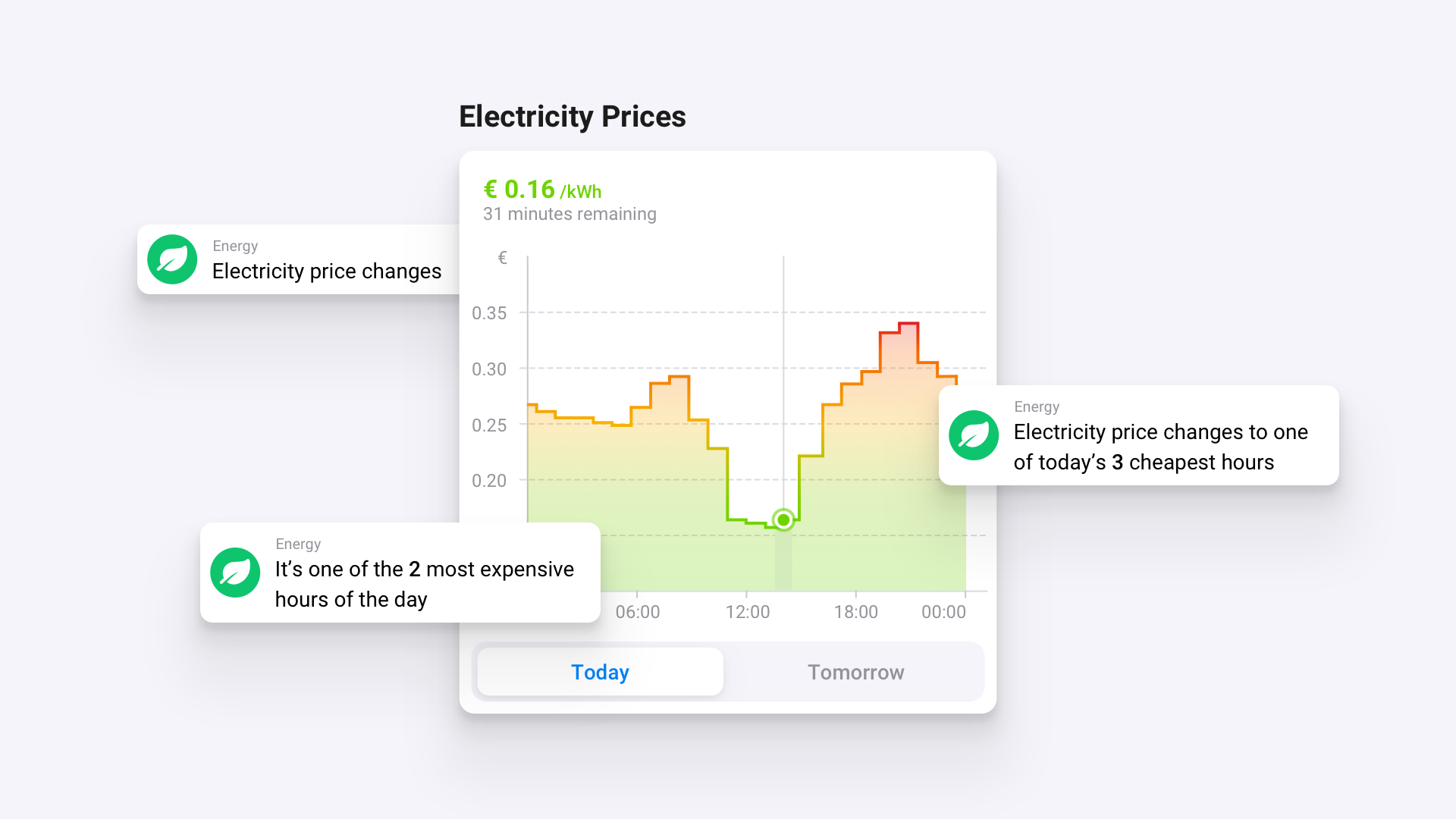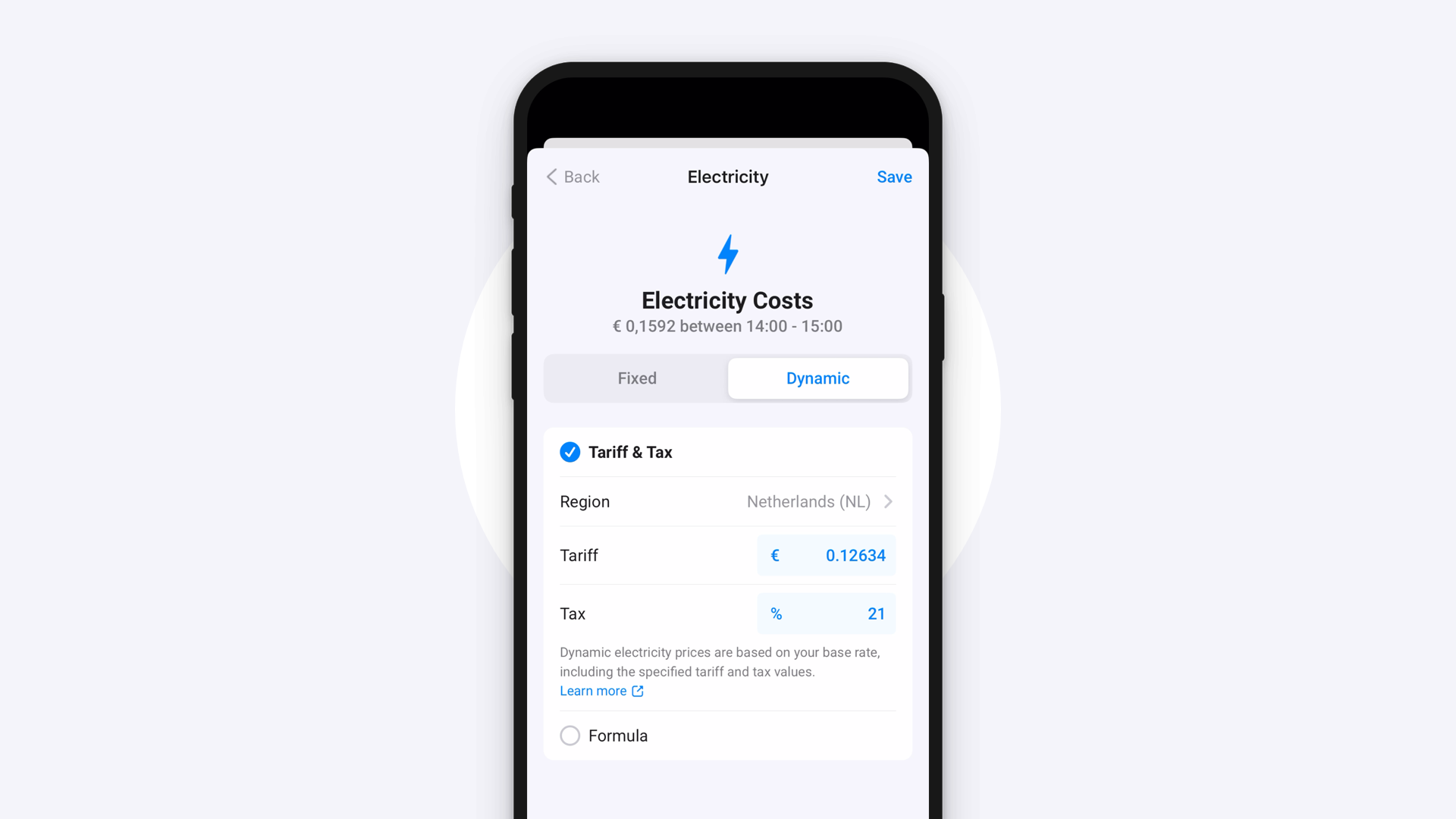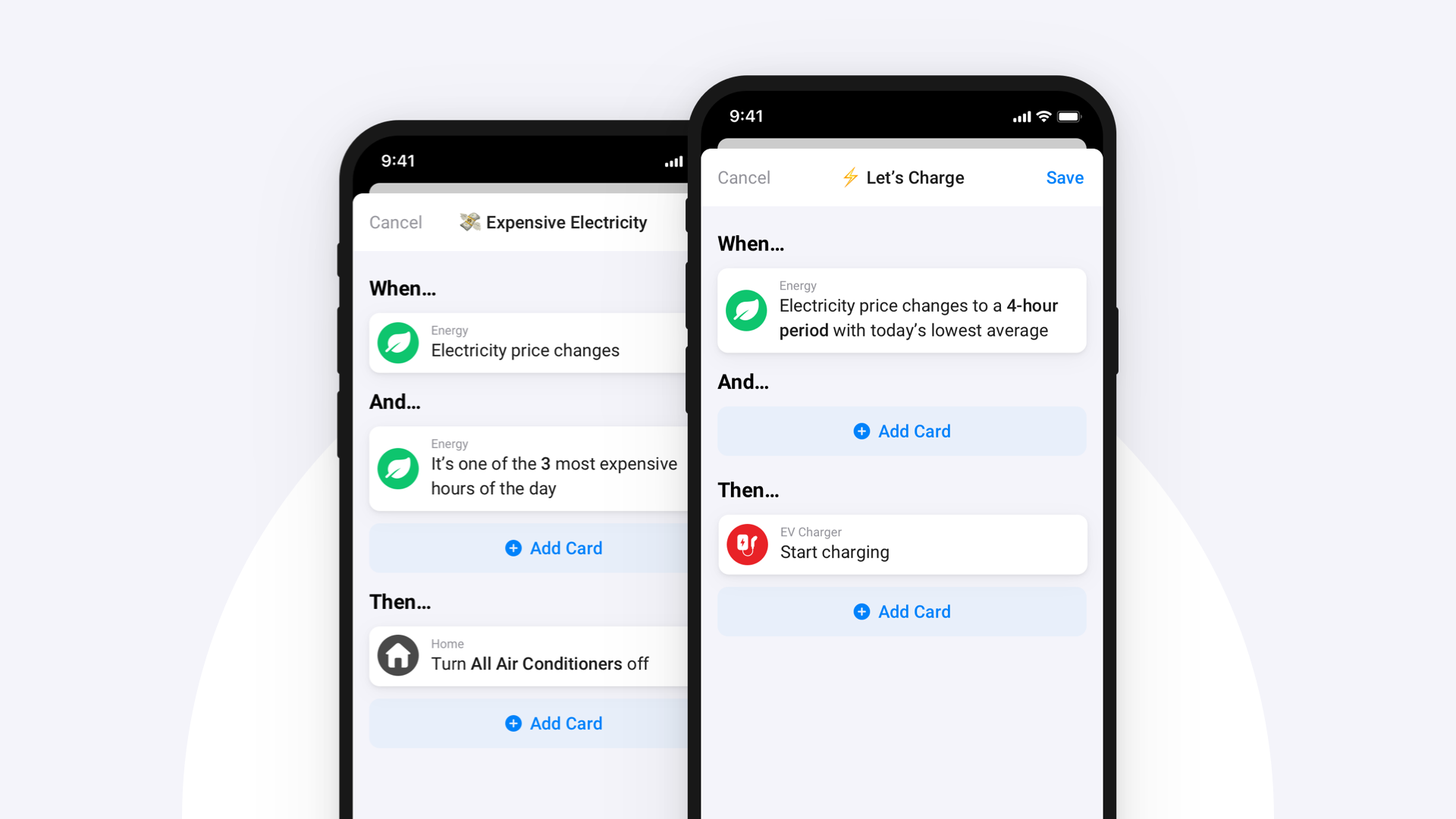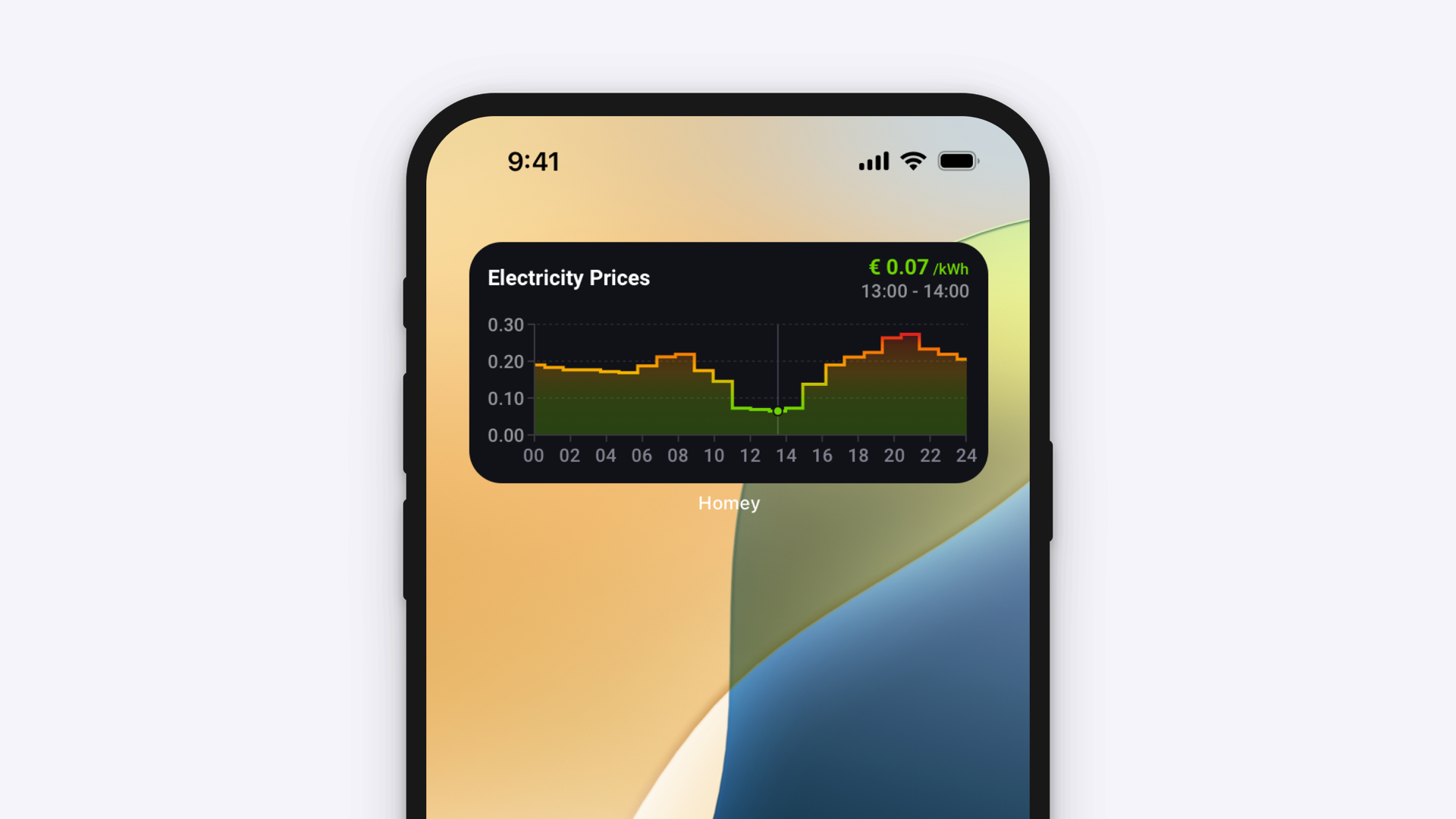Introducing Dynamic Electricity Prices
Homey Energy now supports Dynamic Electricity Prices. Take advantage of live pricing data and automate your usage around it. Whether you’re running the dishwasher, charging your EV, or heating your home, you’ll know exactly when electricity is most affordable — and when it’s best to hold off.

Get your true electricity price in Homey
Homey Energy’s Dynamic Electricity Prices feature combines your region’s live electricity rates with your own tariff details. You can include fixed surcharges and tax percentages, or create a custom calculation to see your true cost per kilowatt-hour (kWh). Then, put this real-time rate to work in your Flows, helping you respond smartly to changing prices.

Automate for the best times
By reacting to live prices instead of fixed schedules, your home can use energy more efficiently. With all-new Flow cards, you can shift appliances to off-peak hours and avoid price spikes. For example, set a Flow to charge your EV during the cheapest hours of the day, or turn off your air conditioning during the most expensive ones.

Track prices with widgets
You can also check live electricity prices through iOS and Android widgets, or right on your Homey Dashboard — giving you a quick, at-a-glance view of your costs throughout the day.

Compatibility
Dynamic Electricity Prices in Homey Energy is available for Homey Pro (Early 2023), Homey Pro mini, and Homey Cloud. If you have Homey Pro, it’s included at no extra cost. Just make sure you’re running Homey Pro v12.6.0 or later and the Homey app v9.5.0 or later. If you use Homey Cloud, you’ll need a Premium subscription.
This new Homey Energy feature is supported in Belgium, Denmark, Finland, Germany, the Netherlands, Norway, and Sweden. While you can use it with any electricity plan, it’s most valuable if your energy contract includes dynamic pricing.




